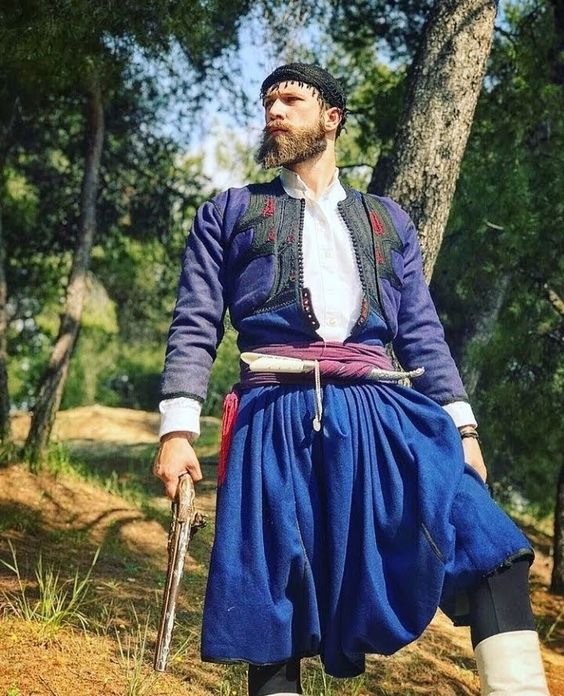Crete, the largest of the Greek islands, is not only renowned for its breathtaking landscapes and rich history but also for its vibrant cultural heritage, which includes traditional clothing. Cretan traditional clothing is a vivid reflection of the island’s history, its people, and their way of life. Rooted in centuries-old customs and influenced by various civilizations that have left their mark on the island, the traditional attire of Crete is both functional and decorative, offering insights into the social and cultural fabric of this unique Mediterranean island.
Historical Context and Influences
Cretan traditional clothing has evolved over the centuries, drawing influences from the island’s various conquerors and inhabitants, including the Venetians, the Ottomans, and the Minoans. Each of these cultures contributed to the development of the island’s attire, resulting in a rich tapestry of styles and designs. The traditional garments of Crete not only served practical purposes but also conveyed social status, marital status, and regional identity.
Men’s Traditional Attire
The traditional clothing for Cretan men is both practical and symbolic, reflecting the island’s rugged landscape and the lifestyle of its inhabitants. The main components of the male attire include:
- Vraka (Βράκα): The vraka is a type of baggy breeches made of dark-colored wool or cotton. These breeches are loose around the hips and thighs but taper down to fit snugly around the calves. The vraka was designed for comfort and ease of movement, particularly for activities such as farming, herding, and fighting.
- Yileki (Γιλέκι) and Meïdani (Μεϊντάνι): The yileki is a short, sleeveless waistcoat, often richly embroidered, worn over a white shirt. The meïdani is a type of long-sleeved jacket that can be worn over the yileki for added warmth and protection.
- Zostra (Ζώστρα): A wide, embroidered belt that secures the vraka and adds a decorative element to the outfit. The belt often features intricate patterns and is tied around the waist.
- Stivania (Στιβάνια): Sturdy, knee-high leather boots that are both functional and stylish. Stivania are essential for navigating the rocky terrain of Crete and are a key element of the traditional male attire.
- Sariki (Σαρίκι): A distinctive headscarf or bandana, typically black, worn by men. The sariki often features fringed edges and can be tied in various styles, each with its own significance.
Women’s Traditional Attire
Cretan women’s traditional clothing is known for its elegance and vibrant colors, often featuring elaborate embroidery and intricate designs. The main elements of the female attire include:
- Kavadi (Καβάδι): A long, flowing dress or tunic made from wool, cotton, or silk. The kavadi is often adorned with colorful embroidery and lace, reflecting the wearer’s region and social status.
- Sartsa (Σάρτσα): A decorative apron worn over the kavadi. The sartsa is typically embroidered with floral patterns and other intricate designs, adding an extra layer of beauty to the ensemble.
- Mandelia (Μαντήλια): Headscarves or veils that come in various colors and designs. Mandelia are an essential part of a woman’s traditional attire, serving both practical and decorative purposes. They are often used to cover the hair and protect from the sun.
- Zostra (Ζώστρα): Similar to the men’s version, this belt is used to cinch the waist of the kavadi, often embellished with intricate embroidery.
- Bolero (Μπολερό): A short jacket, sometimes sleeveless, worn over the kavadi. The bolero is typically richly decorated and provides an additional layer of warmth and style.
- Tsarouhia (Τσαρούχια): Traditional leather shoes, often handmade, that complement the women’s attire. These shoes are designed for comfort and durability, suitable for the island’s diverse terrain.
Regional Variations
While there are common elements in Cretan traditional clothing, regional variations exist, reflecting the island’s diverse geography and cultural influences. For example, the attire from the mountainous regions tends to be more robust and practical, designed to withstand the harsher climate. In contrast, coastal areas may feature lighter fabrics and more elaborate designs, showcasing the influence of trade and interaction with other cultures.
Modern Significance
Today, traditional Cretan clothing is worn primarily during cultural festivals, religious celebrations, and weddings, serving as a symbol of regional pride and identity. Folk dance groups and cultural associations often don these traditional garments to preserve and celebrate the island’s rich heritage. The intricate embroidery and craftsmanship involved in making these clothes are also a testament to the skills passed down through generations.
Conclusion
Cretan traditional clothing is a vibrant and integral part of the island’s cultural heritage. Each piece of clothing tells a story of the island’s history, the influence of various civilizations, and the resilience of its people. Whether through the sturdy vraka and sariki of the men or the elegant kavadi and sartsa of the women, traditional Cretan attire continues to be a source of pride and a tangible link to the island’s storied past. As such, it remains a cherished aspect of Cretan identity, celebrated and preserved by those who call this remarkable island home.


